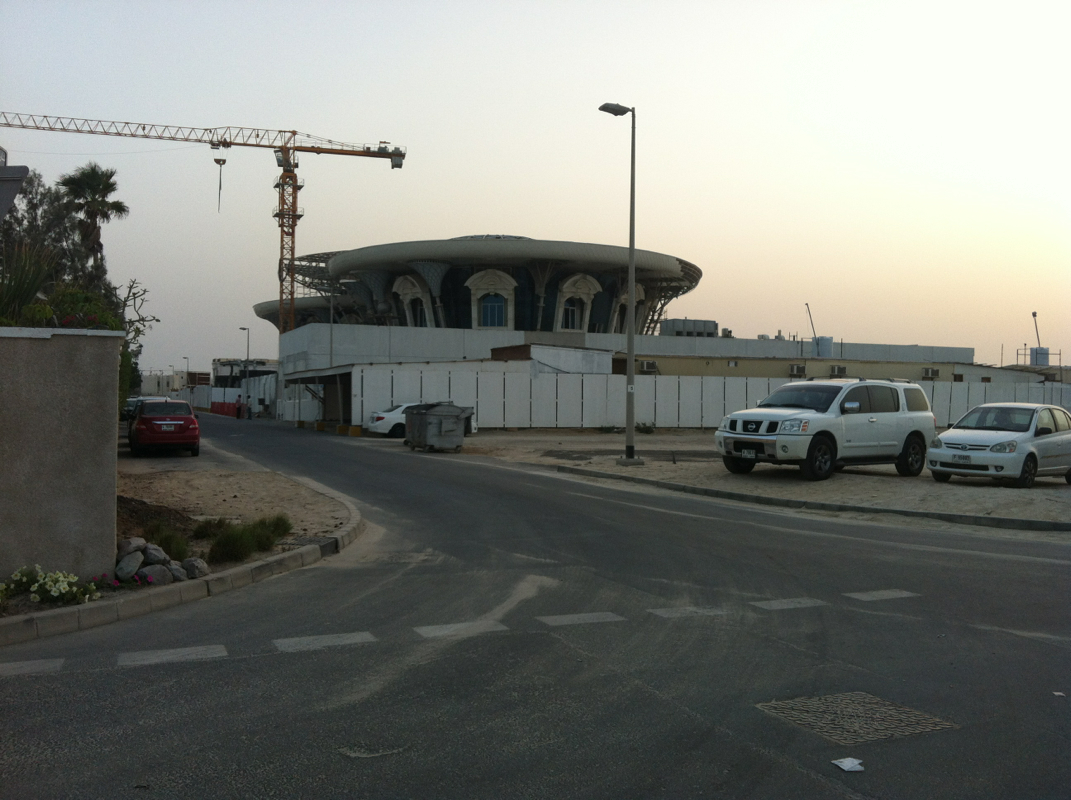The Project Business Case
Prince and just about every other project method agrees, every project needs a business case, however…
Let’s consider the damage to your reputation if you attempt to manage a project without a written Business Case.
What are the consequences of missing out sections?
Reasons:
This was so obvious it didn’t seem worth the effort, it was only an 8 week project.
Result: someone complained that the PM was stepping outside their authority, they spent almost all their waking hours justifying their existence and explaining time and again the reasons why they wanted the smallest of tasks performing.
Business Options:
Too obvious to worry about writing this down.
Result: Someone has a word with the Executive “Why don’t we do this, much easier than what that PM is trying to do” more explanation, going over old ground, forced to waste time analysing an option we knew would not be appropriate.
Benefits:
These were hard to tie down, intangible at the start and there was very little cost outlay anyway, why bother?
Result: Almost everyone expected to gain from the project, different things for different groups at different times. Constantly managing multiple expectations.
Dis-Benefits
It was such a small project having virtually no dis-benefits, then realisation struck home as they tried to “go live” during a moderately busy period … enough said.
Costs
No budget, every time something was needed the PM had to go and ask for the money
Timescale
Was not considered important, so every new thing that came along took priority.
Result of having no Business Case: Pretty unimpressive Project Manager with a damaged reputation.
What about the consequences of not preparing other documents, next month we will take a look at project quality, not product quality, project quality?

This is a view from the empire state building it had a landing area for dirigibles that never ever used it.
The reality vs the theory.
Theory says that a project manager should prepare a plan prior to work commencing.
Reality shows project managers are under extreme pressure to start delivery.
How does prince help? Efficiently documents what to plan for and everything needed for planning. Then suggests three levels of plan. One to keep the governance board happy. One for the project manager and one for those technical things essential for every project. Of course you could choose to combine some or all into one plan.
Theory shows a project hierarchy project boards with authority over project managers. And project managers handing out work packages to team managers.
Reality, whilst the board has authority over the project manager there is only notional authority for a project manager. Despite promises and agreements and sometimes contracts, these get broken with unrelenting regularity and somehow it is the project managers fault.
How does prince help? It provides a clear set of responsibilities and defined decision making points. Combine these with agreed stage and work package tolerances for time cost scope etc. and the project manager has the resource the time the people and most importantly, the product description of what needs to be prepared.
There are more, many more, differences between reality and theory. We can explore more soon as we all try to put prince in practice.

Lausanne Switzerland. This image shows how all we need do is visualise.
You have been asked for a copy of the PID by a group who claim to be scrutinising all projects, which version should you send?
I suppose the first question to ask is “Why do they want this from me?”
They are doing a check up, they think I am not delivering, they are going to pull the funds away…
The opposite is also possible, the project is strategically vital and they want to help.
Whatever the reason, it is difficult to get an understanding of all the business changes.
5 steps to help any organisation get to grips with its business changes.
1. Start by making a list, this is constantly moving. A simple configuration item record for each project is a good place to start. This will enable you to spot the duplicates and start saving.
2. Next, try to understand how the complete plan looks, dependencies and costs, resource contention at the top level, is a department/section too busy at one time for instance.
3. Then standardise reporting structures to show progress is being made, not too onerous not too detailed.
4. This gives us the ability to track performance against plan, showing where attention needs to be directed, and allow us to prioritise against a Business Case.
5. Put in some governance and gateways, agreeing standard assessment criteria to judge initiatives against strategy.
Oh. And to answer the original question, which version of the PID? All of them, showing what was agreed at initiation and the changes made along the way to justify the project.
How does PRINCE help?

Traditional meets steel and glass in Dubai.
Questions about Feasibility Studies and how they fit within the project lifecycle have been asked during my recent training courses.
One delegate was quite adamant that Prince had got the Starting Up process wrong.
Starting Up should do the “bare minimum”
How do we account for the Business Options section of a Business Case?
Here is an example:
A project mandate asks us to examine a building suffering from a lack of maintenance and needs something doing, but what?
What are the Business Options?
1. Do Nothing
2. Knock it down and build a new one
3. Refurbish it
4. Close it and sell off the land moving the residents elsewhere
Analysis of these options can take some time requiring cost/benefit analysis and investment appraisal of each option before making a decision. How can this be done with “bare minimum” resources?
1 – No project, no problem
2 – Think about the Project Plan
3 – Think about the Risks (clue, they are different to the risks to Option2)
4 – Think about the Business Case (we make money from this one)
With Prince, we need ONE project plan, ONE set of risks to manage and ONE business case.
The short answer, if we face this problem, is to run a Feasibility Study project, the main output from this would be a Report showing the best way forward, which then goes on to trigger the “real” project.
This has more detail in the Tailoring Prince chapter.
Ideally this is all managed by Corporate or Programme Managers

There must have been many options for this building. They selected an interesting one that's for sure.
Organisation from the Supplier’s Perspective
More and more suppliers are turning to PRINCE to manage projects on behalf of their customers; as a result delegates are asking how PRINCE’s organisation structure can be made to work for them.
First thing the remember is that the Business Case should reflect the benefits to your customer, and that there will be two business cases, one for you too.
Also, try to ensure you do not fix the role to be the same for all projects, as each will have different needs.
You could well be the Project Manager, but you could equally be taking the role of Senior Supplier, if, for instance your role is to coordinate resources.
On the other hand you could well be a Team Manager, who has been provided to the customer’s project on behalf of an account manager, which could even lead to a full PRINCE project within the Managing Product Delivery process.
Just a few suggestions from me, any other views?

The Dubai skyline at dusk. A massive programme driven by a visionary leader successfully delivered with project management for each building.

Dusit Thani hotel in Abu Dhabi one quality product.
Focus on Products, why?
Why is Prince so obsessed with Products, what is wrong with a Work Breakdown Structure?
The answer is there is nothing inherently wrong with a WBS, but I suppose the beauty of a PBS is that it clearly displays all the project’s outputs on a single diagram along with some key dependencies, external products.
But for me the real difference is when we examine the Prince approach to quality, it is usually much easier to apply quality measures (criteria) on a Product than it is on an activity or task.
This is why, IMHO, Prince has an emphasis on Product Based Planning, it also enables the Project Manager’s own outputs to be judged too, from the quality criteria of each document in Appendix A..
Have you recently passed PRINCE and having difficulty gaining experience?
This can be a challenge, you want to manage a project and put your learning into practice, but until you have some experience the opportunities don’t come your way.
Some suggestions:
1. Try offering your services as project support, or, if you are friendly with a Board member, offer to help with their Assurance responsibilities.
2. Use your specialist skills in a Team Manager role for a small project, drafting out a Work Package for yourself.
3. Try implementing PRINCE in a personal project
Let’s explore 3. a little further.
Who would the Board be? The family? Much more challenging than work colleagues.
What would we do during Starting Up? Obviously the roles and team structure would be notional and is best kept to yourself, I doubt the family will understand.
Outline Business Case, should provide an interesting challenge, but no more than a Project Product Description. Lessons Log if you done this before, what about asking friends? Project Approach, doing the work yourself, or bringing in trades people?
Initiation, I would doubt you will get much benefit from attempting to write all 4 strategies, but a Communications Strategy with some stakeholder analysis may help. Prepare a PBS and Product Descriptions should give you some great experience.
Do the work and manage some Risks and Issues, then produce an End Project Report.
Why is this important? Because we all need to be good bosses if we want our people and teams to deliver the outputs.
Take a moment to think about the best boss you ever had. What was the main characteristic they displayed?
A recent survey showed the most important characteristic was, “left me to get on with the job and did not micro-manage”
This is, Manage by Exception, which is at the heart of all Best Practice guidance.
Be a better boss by agreeing clear tolerances for time, cost, quality (products), scope, risk and benefits.
Often Project Managers will complain that their Boards insist on regular progress meetings, and this is understandable for Board members who do not understand management by exception.
What can you do if the Board does insist on progress meetings?
1. Be careful, they will change their minds and add things to the project, so use the change process
2. Try to give them decisions to make, maybe to approve Requests for Change or help deal with Risks
3. You might even try to have a next stage plan for them to approve at each “progress” meeting
4. As the project progresses and they gain more confidence in your ability, cancel the odd meeting, might seem odd but they will thank you for it.
An exceptional project built the tallest building in the world.
Measuring a Project vs Operations
On a recent Prince course someone asked how they could measure their project with the recommended Time, Cost, Quality, Scope, Risks and Benefits.
It was called a project, but when we dug a little deeper, discovered that it wasn’t a project at all. So that lead to some discussion about it being a programme, but it was very clearly defined and MSP transformation style management didn’t fit either.
It turns out they were delivering a service, IT based, rolling one year contract delivering the same service to the public, year after year.
There are probably two ways to approach this, they could manage each year as a project. Starting Up each year, Initiating when the money was guaranteed, this has some merits and works well in some circumstances.
We agreed, eventually, that they would measure KPI’s (Key Performance Indicators) and the real goal was improvement in the delivery of the service.
Setting up the Service would have been their first project, measured with TCQ etc.
Running the service is measured with KPI’s which provides baseline measures for any performance improvement projects.
The Benefit Review Plan would show the current (baseline) system performance, and the PRINCE plans would show the changes to the service needed to move to a higher performance level.
Their final project would be shutting down the service and informing their clients.
Any other tips for this type of organisation?
Hi Prince in Practice begins soon
|











 RSS Feed
RSS Feed